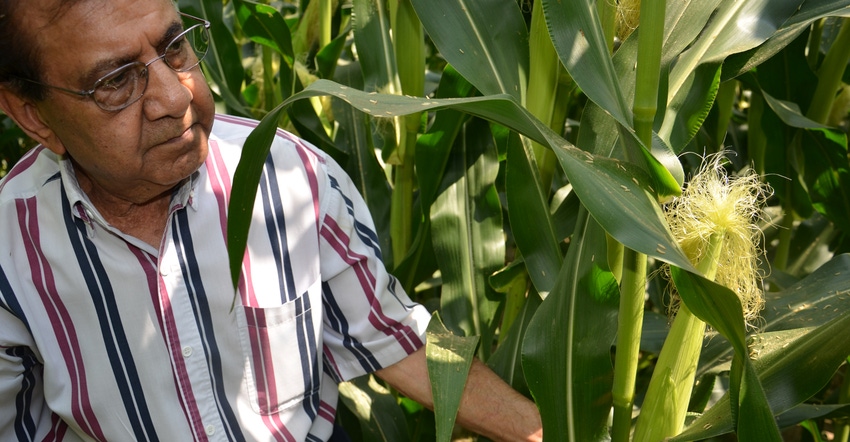December 30, 2019

I have worked with corn for more than 50 years. I’m more amazed than ever by the versatility of this unique plant that feeds so many people and animals and is found in over 500 industrial products. What role is it going to play in feeding billions of more babies by 2050?
I’m sure this plant, worshipped by Native Americans and Mexicans, has the genetic potential to meet the challenge. But will corn breeders of tomorrow be ready to harness its potential?
During my 50-plus years in this industry, I’ve worked with open-pollinated varieties, top-cross hybrids, double crosses, three-way crosses and single crosses. Yields have more than quadrupled. That’s through the joint efforts of genetic gains made by corn breeders and research on fertilizers, fungicides, herbicides, insecticides and cultural practices.
Corn breeders have made very significant genetic gains in developing higher-yielding hybrids. What is a corn breeder?
A corn breeder is a person who tries to develop better hybrids than what’s being grown today in a certain geographic area. But he or she can’t just develop hybrids that will be grown next year. They must look at least eight to 10 years into the future and shoot at a moving target. They must predict the type of farming practices that may be prevalent in the future.
Genetic platform
A corn breeder must build the genetic platform and then consider value-added traits such as tolerance to herbicides, insects, diseases, heat and drought, as well as nitrogen fixation and improved nutrition which can enhance the value of hybrids.
But corn breeders must build a high-yielding genetic platform first. It must have the inherent ability to tolerate insects and diseases, and perform well in regards to most soil types, farming methods, fertility rates and other environmental conditions. All the “genetic traits” put in poor-yielding base genetics will not produce a high-yielding hybrid.
I worked on developing higher-yielding corn for more than 40 years in Iowa, Illinois and Indiana for various seed companies. Tom Bechman, editor of Indiana Prairie Farmer, visited me in 1993 at my research nurseries near Greensburg, Ind., where I was growing several segregating populations for inbreeding at 70,000 plants per acre.
He asked why I was growing corn at such high-density populations. I explained my theory about selection pressure. I will try to explain it more in future stories. In simple terms, I was beginning to look for genetics that could withstand high populations and accompanying stresses. I was looking to the future.
Even in a tough year like 2019, I know some farmers in Indiana harvested more than 230 bushels per acre. High yields of 400 to 500 bushels per acre are already harvested by many farmers in National Corn Growers Association contests with special efforts, even with current hybrids.
I’m confident that with the hybrids of the future and use of modern technology, more farmers will be able to produce 400 to 600 bushels per acre.
So how should you plan for 2020? Of course, no one can predict the future. But we should plan for an average year and hope for the best!
Nanda is director of genetics for Seed Genetics Direct. Email him at [email protected] or call 317-910-9876. The views expressed here do not necessarily represent the views of Farm Progress/Informa.
About the Author(s)
You May Also Like






